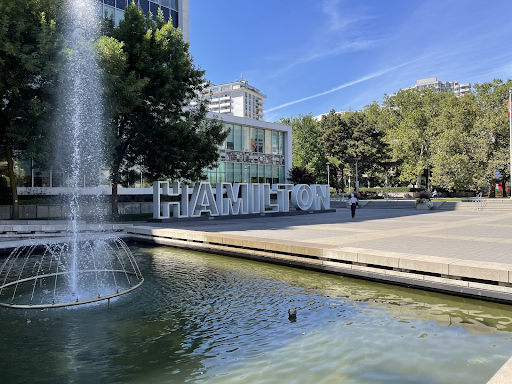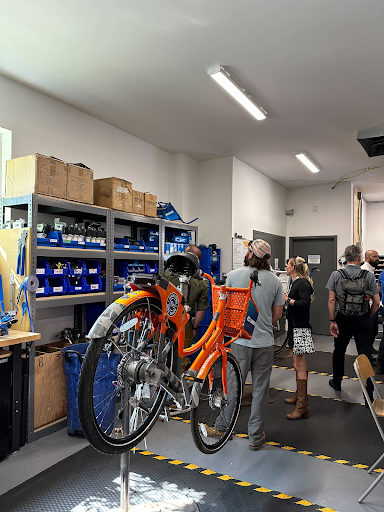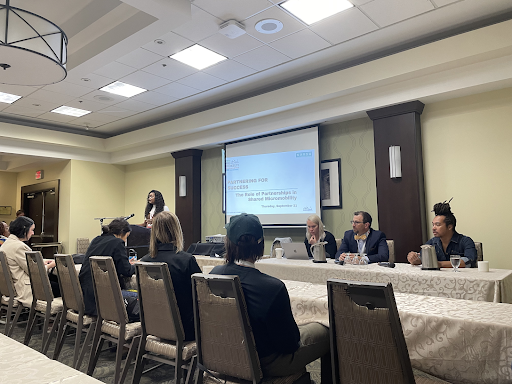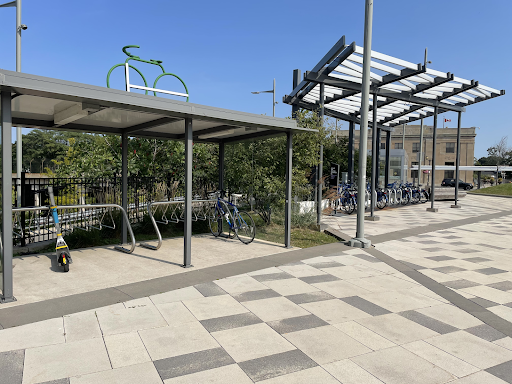Event Recap: NABSA’s 2023 Annual Conference Growing Shared Micromobility: Connecting People & Places, Hamilton and Toronto, ON, Canada
By Shared-Use Mobility Center
Oct 10, 2023
Introduction

In September 2023, representatives from bikeshare systems, local government officials, researchers, and micromobility enthusiasts gathered in Ontario, Canada, for Growing Shared Micromobility: Connecting People & Places, the North American Bikeshare & Scootershare Association (NABSA)’s tenth annual conference. The conference offered a variety of sessions, from panel discussions, mobile workshops, to facility tours. This year officially kicked off with an address from Mayor Andrea Horwath of Hamilton and a keynote address by Karla Avis-Birch, the Chief Planning Officer at Metrolinx, who spoke about transportation development in the Greater Golden Horseshoe Area, and how micromobility can fit in with bus and rail service.
Unlike many conferences, Growing Shared Micromobility: Connecting People & Places was a multi-city event. NABSA partnered with both the City of Hamilton and the City of Toronto, with each city showcasing their own bikeshare programs and distinctive perspectives to bikeshare and scootershare operations. Attendees heard from Bike Share Toronto and Hamilton Bike Share, and experienced micromobility in both cities first-hand through mobile workshops, group rides, and open houses. Bike Share Toronto also showcased its expansion initiative, which aims to bring bikeshare stations to all of the city’s 25 wards by 2025. Learn more about Bike Share Toronto’s growth plan from SUMC’s case study on the Mobility Learning Center.
Throughout the four-day, multi-city conference, attendees examined the role of micromobility in transportation networks, explored the trajectory of the bikeshare and scootershare industry, and addressed what barriers still exist.

A few key takeaways…
Navigating different operational structures
Conference participants represented bikeshare and scootershare operators from the public, private, and non-profit sectors, highlighting the many configurations of micromobility operations. This was especially evident in the differences between the host cities themselves: Bike Share Toronto has been publicly owned and operated since the City of Toronto took over the system in 2013 and transferred management to the Toronto Parking Authority (TPA), the city agency that operates its parking facilities. As a subsidiary of the TPA, Bike Share Toronto is primarily funded through parking revenue.
Hamilton Bike Share, on the other hand, is managed by Hamilton Bike Share Inc., a local non-profit which took over operations in 2020 after the City of Hamilton’s contract with a private operator fell through, and is funded through a combination of sponsorships, user fees, donations, and contributions from the city. Representatives from the two cities and their bikeshares presented at the “A Tale of Two Cities” panel discussion to explain their histories, highlight their differences, and educate on the benefits and challenges of their configurations. With the micromobility industry itself being relatively young, convening operators to discuss the pros and cons of different management structures is invaluable to explore how the industry can grow and evolve.
The value of partnerships
Though more and more cities are seeing the benefits of bikeshare and scootershare, the industry still faces many barriers. Shared micromobility can be complex and difficult to implement, and it often takes strong partnerships between public, private, and/or non-profit entities with their own skills and specialties to successfully operate a micromobility program. A breakout session titled “Partnering for Success: The Role of Partnerships in Shared Micromobility” examined why partnerships are critical for the micromobility industry, and how good partnerships can improve bikeshare systems in terms of cost, ridership, and other key performance metrics.

Facilitating intermodality
Micromobility practitioners are continuously exploring how bikeshare and scootershare can integrate with other transportation modes, and facilitating multimodal trips was a common topic during the NABSA conference. A panel on crossing boundaries through multimodal trips discussed interregional and interconnected systems and how to form those trip connections. Another breakout session titled “Transit and Micromobility: Multimodal Connections” had panelists from public, private, and academic organizations discuss efforts to promote micromobility and intermodality through trip planning applications, commuter benefits, and interactive planning tools. This session notably highlighted some of Hamilton’s efforts to facilitate bicycle-transit integration, including installing new and extensive bike facilities near transit hubs and offering free bus rides for bicyclists up and down the city’s steep escarpment through Hamilton Street Railway’s Mountain Climber bus.

Conclusion

The micromobility industry has grown significantly over the past several years, and has already rebounded from the Covid-19 downturn. With this progress, it is necessary to think about micromobility as part of a cities’ transportation networks, and consider how it can interact and interconnect with other modes. In order to make bikeshare and scootershare as successful as possible, cities and operators should continue to convene, discuss ideas and challenges, and ultimately learn from each other.
As part of the Mobility Innovation Collaborative partnership with the Federal Transit Administration, The Shared-Use Mobility Center convenes a working group with agencies and local governments around the country working to integrate micromobility with their transit systems. In these working group meetings, agencies discuss challenges and strategies they face, and share knowledge and resources to learn from each others’ experiences. Collaboration on key issues is vital, and NABSA’s Growing Shared Micromobility: Connecting People & Places conference was a valuable forum where attendees could have those key discussions to move the industry forward.
To stay up to date on details of upcoming events and trends in the mobility industry, subscribe to SUMC’s Mobility Hub Newsletter.
Send questions, comments, and recommendations to: mic@sharedusemobilitycenter.org.
Originally published October 2023, revised June 2025.